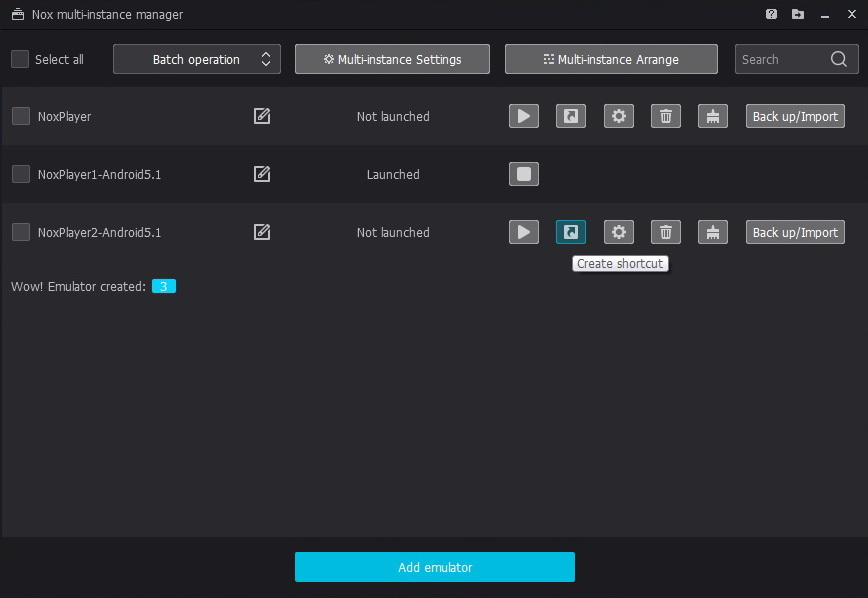
This enables one instance to host a myriad of different projects. Different Configuration or Settings: Jira is famous for its configuration capabilities offering schemes for almost every concern of the application.Such requirements can be the case with classified projects, such as defense contracting. External Customer requirement: Some customers might require an organization to run their projects and host their data on systems that are physically separated from the rest of their infrastructure.In this case, it might be a viable option to run a stable, conservative, production instance while operating a separate productive Jira server for early adopters.
CREATE NOX MULTI INSTANCE MANAGER SHORTCUT SOFTWARE
new Jira Software features for Agile teams), while other parts of the organization have implemented stable, specific workflows and value system stability over new features.

support / public feature requests) and make it accessible to customers and partners. A dedicated instance is then set up to host external content (e.g. development) on a separate instance inside the firewall. However, many customers, including Atlassian itself, prefer to run internal content (e.g. Public / Private Jira: Jira offers the functionality to make specific content only accessible to identified groups through permission schemes and user groups.Reasons to set up a federated environmentĭelving into the intentional set up of dedicated instances, we can identify several reasons for doing so by summarizing the practices of our customers, partners and our own IT organization: Intentional federation set up: One, or many, reasons listed below could lead to an intentional set up of federated Jira systems.This leads to parallel Jira systems with possible integration at a later stage once cross-divisional processes and collaboration is encouraged. Autonomous IT organizations: Different departments within an organization may run their own IT organizations.





 0 kommentar(er)
0 kommentar(er)
